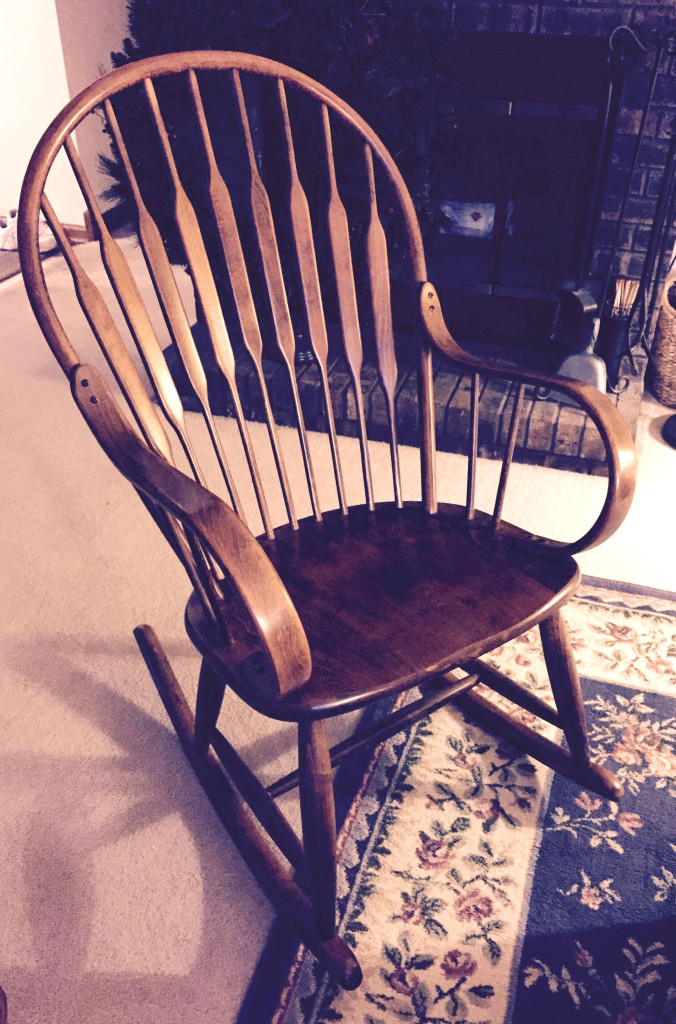Like most other Etsy sellers earlier this week, I received an e-mail letting me know that the handmade craft, vintage and craft supplies marketplace had changed its product categories. Etsy suggested I check the categories to which my items had been assigned, and correct them as needed. For the most part, I discovered that the re-categorization was accurate, but in those instances where it was not, I found myself delving into Etsy’s 15 new product categories and their many sub-categories HERE and HERE. Tedious work, I thought. I’d rather be creating books.
The truth of the matter is that selling your creative work always involves tedium. I tell folks that anyone who crafts can sell on Etsy, but this is only true if you agree to learn all you can, for your purposes, about bookkeeping, photography, SEO (search engine optimization), pricing, marketing, and much more. The longer you sell, the more you realize you didn’t know at the beginning of your journey, and how much more you need to learn. And all of this can distract you from the creative work that is the source of your desire to sell. You know that old proverb, don’t you?
All work and no play makes Jack a dull boy.
Every seller of anything—whether you sell mass-produced goods or one-of-a-kind products—faces the challenge of sustaining a creative focus. If you’re the CEO of a big conglomerate or the sole owner of a micro business, you simply can’t solve problems or visualize new developments twenty-four hours a day, seven days a week, without some coping strategies.
According to John Mackey, co-chief executive of Whole Foods, adults can only focus intensely for short periods before they need to switch gears. Mackey shares his philosophy with BBC News Business in Top bosses reveal their secrets for getting work done:
We can only can [sic] function at an optimum level for about 90 minutes. In other words we can do intense work for about 90 minutes and then we need to do something else.
And if you try to keep focusing you’ll notice there’s some long meetings, people begin to wander, their attention can’t be focused and you get to this real point of diminishing returns.
You’ll find you can do your best work in these sort of short bursts and you have creative ‘oh my gosh’ epiphanies and things are coming and you get it down. But then you’ve got to go renew yourself.
So, what’s the solution for artisans who would rather dig into their yarn stash, mold their fingers around a clay pot, or thread beads on a needle than balance a checkbook? How can you sustain your creative focus? Here are six suggestions that will help you balance your creative work with planned interruptions.
- Switch gears. Optimizing your product listings, paying the bills, or performing any necessary but essentially non-creative work after 90 minutes of writing (if you’re an author), of collage work (if you’re a mixed media artist), or thread work (if you’re a fiber artist)—or whatever type of creative work you do—can improve the quality of your creative output by giving you a sanity break. In other words, you can’t function at your creative best every moment of every day. Currently I have the luxury of working out of my home, where I can compartmentalize my day into periods of design, housework, marketing, bookkeeping, leisure and other activities, but I can foresee dividing up weekday evenings in the same way if I work a day job. Don’t many athletes cross-train in multiple disciplines so they’ll achieve more balanced, stronger skills overall in their main sport? Switching gears between creative and non-creative work works similarly. You do need a break.

- Move. Physical movement increases blood flow to the brain, essential for clarity of thinking. Your physical stamina is related to mental stamina, so take the time to move your body parts. Years ago, when I worked for an aerospace engineering firm along the southern California coastline, co-workers jogged or surfed during their lunch hour, then showered in a company-provided facility. If you can, take a brisk walk every day; if you work outside your home, bring along a pair of walking shoes so you can walk during your mid-day break. I’ve noticed recently that many job listings advertise the use of on-site exercise facilities as an employment benefit; if you have that option, take advantage of it. When I visited fellow Etsy artisan and blogger Edi Royer of Memories for Life last mid-October, I noticed an exercise bicycle she uses regularly at one end of her design studio. Likewise, Blogging Business Artisans team member Natasha Nunez of The Artisan Life maintains her physical stamina with a cross-fit membership. If you can’t afford a similar gym membership, or you lack adequate space for exercise equipment in your home, or you live where it’s too cold to walk outdoors, you can still find ways to move. Turn on your favorite music, and dance. Even housework qualifies as exercise, especially if it’s your only form of physical movement. It takes a certain degree of strength to push a vacuum cleaner into every corner of a room, through a hallway, and into successive rooms.

- Be still. It may sound counter-intuitive to do nothing instead of moving, especially after my previous suggestion to move, but shutting out external stimuli for a short while can be incredibly rejuvenating. Once upon a time, my second grade teacher asked her students, after lunch, to close their eyes, rest their heads on stacked, folded arms, and clear their minds. I’m sure her aim was to chase away distractions in favor of a stronger learning focus during the afternoon. You can do the same by taking a brief nap, or by sitting in a comfortable chair and thinking about nothing at all. I have a favorite rocking chair in my living room that does this job nicely. Consider meditating. One of my former employers, a real estate developer, used to close his office door for a short period every day to meditate. He claimed that meditation energized him, and that he felt more focused after each session. According to a study, “Meditation Practice Modulates Performance and Strategy Use in Convergent- and Divergent-Thinking Problems,†conducted by researchers at Leiden University in the Netherlands, different types of meditation can affect different types of creative thinking, i.e., divergent and convergent thinking. Another study on mindfulness, “Mind the Trapâ€: Mindfulness Practice Reduces Cognitive Rigidity, partially funded by the Israel Science Foundation, concludes that mindfulness, or the process of “staying in the moment,†may reduce rigid thinking, or being blinded by past experiences in coming up with a solution to a complex problem.
- Play. Sometimes the reason you can’t maintain your creative focus is that your inspiration bucket is empty. Fill it with play, which can take many different forms. Read for pleasure, visit a museum, enjoy a theater production, or simply people-watch and collect impressions from a park bench. Learn a new creative skill that is completely different from the skills you use to design the products you sell. Writer Julia Cameron of The Artist’s Way encourages every creative person to put an “artist date†on the calendar. “An artist date,†writes Cameron, “is a block of time, perhaps two hours weekly, especially set aside and committed to nurturing your creative consciousness, your inner artist.†This artist date is intended to be spent alone, not with a friend or significant other, when you fill up your creative well with sensory images—images involving sight, sound, touch and smell. When I was in high school, my creative writing teacher sat the entire class inside the school planetarium, asked for complete silence, and played soothing instrumental music while the stars twinkled above our heads. Afterward, we were asked to free-write whatever came to mind, which for many of us turned out to be poetry. I don’t think any of us doubted this experience would free us from any writer’s block we might have been experiencing. It certainly focused us on our task. “Creativity,†says Julia Cameron,†is an act of faith.â€

- Seek help. One of the biggest errors sellers of handmade items make is to not recognize or accept that we have limitations, and then compound that mistake by not asking for help. You know you’re making both of these errors when you can’t meet your deadlines without becoming exhausted, when you’re so tired that you can’t focus on your goal(s), and when you begin blaming external factors, exclusively, for a lack of success. As business owners, we can’t know it all and do it all without assistance. Earlier in this post I mentioned my friend, Edi Royer, who sells laser-engraved, personalized products through Memories for Life on Etsy. After a particularly busy lead-up to the fourth quarter, Edi recognized that she needed shipping help, and hired a part-time person. Of course, not everyone who needs assistance can afford to hire someone. Sometimes this means accepting your limitations and modifying your goals, your budget, your materials or your calendar. Or it could mean a friend helps you out, either with physical assistance or with timely advice. Networking with others to find a solution can be very effective. Or, perhaps, the help you seek is just a book away. In my own case, even after selling for seven years on Etsy, I felt I could use marketing help. I purchased a book, Etsy-preneurship, by Certified Public Account (CPA) and Certified Treasury Professional (CTP) Jason Malinak, and began subscribing to his Thrive program, a more statistical and strategic approach to marketing that I don’t believe I could have figured out on my own. The point in seeking help, of course, is that you don’t have to do things all by yourself. Don’t allow your creative focus to be sapped by your unwillingness to seek help and your desire to do it all.

- Eat, drink and sleep well. It likely sounds obvious to say that eating healthy foods, drinking plenty of water, and sleeping at least eight or nine hours each night are critical to helping you sustain your creative focus, but I’m stating it as a fact, nonetheless. Just as it’s true that exercise feeds your brain, these other factors—eating, drinking and sleeping well—influence your overall well-being and your energy levels. The power of sleep, in particular, has been studied by psychologists. Tom Stafford, in How sleep makes your mind more creative, writes about a study, Human relational memory requires time and sleep, conducted by Matthew Walker (now at the University of California-Berkeley) that illustrates how the condition of sleep plus time aids you in the ability to make inferences, or connections between ideas and concepts, in ways that make sense. Your body is the delivery system for your creative energy; take care of that delivery system, and it won’t let you down.

If you have other suggestions for sustaining your creative focus, I’d love to hear them. Meanwhile, I’d like to point you to a few resources referenced, directly or indirectly, in this post:
- Cameron, Julie. The Artist’s Way Every Day: A Year of Creative Living.
- Cameron, Julie. The Artist’s Way Morning Pages Journal.
- Cameron, Julie. The Artist’s Way Workbook.
- Malinak, Jason. Etsy-preneurship: Everything You Need to Know to Turn Your Handmade Hobby into a Thriving Business.
- Malinak, Jason. Etsy-preneurship Thrive community (members only via subscription).
© 2015 Judy Nolan. All rights reserved.



This post was very well written. I found the category changes to be inaccurate and divided the work up. I like the idea of changing up what you’re doing if you get stuck and suggestions about dancing, cleaning, etc., which I don’t do much.
I also like your blog, and may ask you a few questions since I’m going to switch mine over to WordPress too.
Thanks, Judy.
Great post, Judy.
Such great points. We do need a little play with our work 🙂
And I like how you mentioned that we need to combine/balance our creative work with our non-creative work. 90 mins. does sound like a legitimate time frame for max. focus. That’s what I love most about my work…all the different parts that go into it. If I’m bored working on one thing, I have 20 other things I can choose from 🙂
Thanks for the shout outs!
I’m definatelly will go with your notes. Like always, art now even less included and cut to one line of options. Maybe it is a time to move to new platform … hmmm. Great post Judy!!!!
Good advice and well written! I need to work on the “move” part and also divide my day up better. And this is the first I heard of category changes, I will have to check it out. Thanks,
Rose
Yeesh, I hadn’t actually looked at all the new categories, but there are a lot! I somehow missed that email. Maybe I just didn’t notice it while I was away from home.
I read a study a year or two ago about how standing up and moving around for a minute or two every 20 minutes is very beneficial. It’s free and something almost anyone can do almost anywhere. =)
I absolutely agree that you have to accept your limitations and ask for help when you need it. I have a horrible habit of trying to get way too much done all by myself in the lead-up to any craft show, and it always leaves me pointlessly exhausted.
Great post and thanks for mentioning me!
Yep, lots of new categories! Some work but I think it will help and be a good thing in the end. I bookmarked the list so I could look at it while listing, if needed.
I’m one who gets bored easily so I tend to jump from project to project and in the instance of Etsy, jump from shop to shop listing or crocheting or hunting for vintage stuff. Computer time makes my back hurt so I move around a lot, and intersperse housework (or I’d never get anything done!) In fact, the dishwasher is calling to me right now!